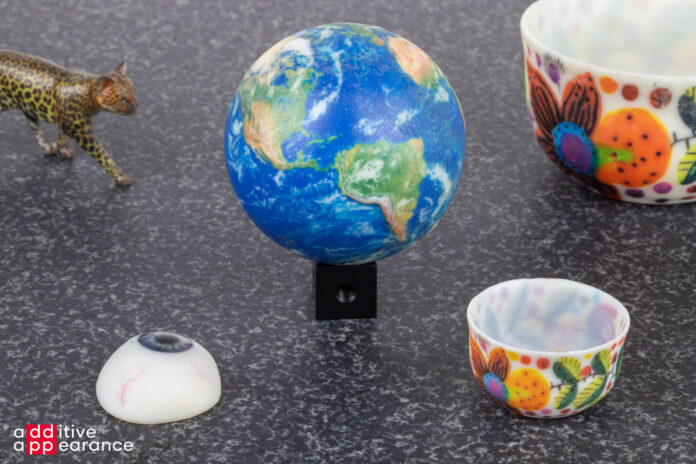Additive Appearance software solution would yield key benefits for product design where appearance matters
The business segment might still be volatile but companies still seize the opportunity to penetrate new segments and address issues that they believe are crucial to help the industry move forward. Additive Appearance, a spin-off company from Charles University, based in Czech Republic, officially debuts in the Additive Manufacturing market.
The startup develops a simulation 3D printing software solution that aims to provide a simple way to print the resulting prototype of a 3D model with maximum similarity to the final product. The software is built on several years of research in computer graphics. The founding team especially focused on understanding and replicating visual reality using computer algorithms.
Results of their research are already being used in many 3D rendering systems for CGI in movies and product visualization. Their know-how lies in predictable and accurate light simulation, a direction in which they are, amongst other things, coordinating a European research project on the topic.
The potential for Additive Manufacturing
According to the company, 3D printers can produce objects with complex appearance, but existing software, which is adapted from 2D printing, can not access the full gamut of appearance that the hardware can produce.
Additive Appearance’s software is focused on the visual appearance of the resulting 3D prints and will not only achieve high color accuracy, but also the best texture sharpness, which has been very difficult to achieve with existing technologies. The team is building the software with components from artificial intelligence to form a multi-step virtual optimization that is running before the printing. By using this software in combination with PolyJet 3D printers, the resulting physical prototypes will provide designers with a unique opportunity to communicate their vision to clients on prototypes as believable as the intended final product, a press communication reads.
Above all, the goal is to expand the availability of the software regardless of hardware limitations such as the brand of printer – to benefit every user possible. Another goal for the future is the production of the final parts themselves, which, thanks to these technologies, will not only have the desired look, but also will be fully functional.
“With our great team and joint partners, we strive to get the industry a few steps closer to our dream, the Star Trek Replicator. In our first step, we employ beautiful math and algorithms to help fabricate beautiful, accurate colors in 3 Dimensions,” says one of the founding members and CEO, Thomas Nindel, Ph.D.
From industrial to consumer goods applications
Additive Appearance is coming to market at a crucial time when AM is transitioning from only industrial applications to a wider audience.
Beyond its current application in product design, this technology is starting to disrupt a wide range of other industries where appearance matters. In fashion, designers are printing intricate details directly onto fabric. Museums are looking to preserve and restore their cultural heritage artifacts with the combination of 3D scanning and 3D printing. In the movie and toy industry, high-priced collectibles are increasingly 3D printed to achieve captivating details that astonish the fans of pop culture, movies and computer games.
Additive Appearance is the fifth newcomer that debuts on the AM industry this year – the second one in the software segment.
Remember, you can post job opportunities in the AM Industry on 3D ADEPT Media free of charge or look for a job via our job board. Make sure to follow us on our social networks and subscribe to our weekly newsletter : Facebook, Twitter, LinkedIn & Instagram ! If you want to be featured in the next issue of our digital magazine or if you hear a story that needs to be heard, make sure to send it to contact@3dadept.com


